Opinion
Directions of prevailing political realities
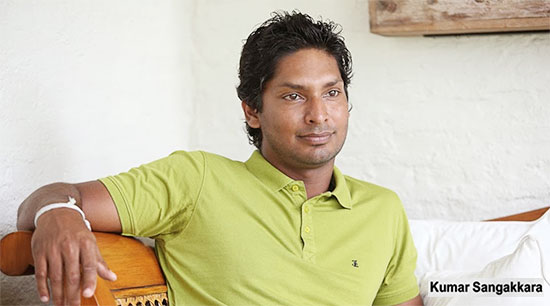
The election of a new parliament, like the election of a new president, provides an opportunity for the nation to envision its future. One can trace the background to this election, link by link as it were, over a chain of circumstances. Each of us might choose a different ‘chain’, and make it go back as far or as near as we wish to. In my case, the chain is the issue of a Sri Lankan identity, and it stretches back to at least 1948.
There is no doubt in my mind that the ideology of identity played a role in the election just concluded – as it has in the past. Especially since the end of the separatist war, the spotlight has been thrown afresh on two strands of thought: one of ‘ethno-religious majoritarianism’, and the other, of ‘pluralism’. Since these terms can mean different things to different people, I need to define what I mean by each.
By majoritarianism I mean a “…political philosophy or agenda that asserts that a majority (sometimes categorized by religion, language, social class, or some other identifying factor) of the population is entitled to a certain degree of primacy in society, and has the right to make decisions that affect the society.” (https://en.wikipedia.org/wiki/Majoritarianism). And in the case of ethno-religious majoritarianism, its application is to the presumed primacy of the segment of society which identifies itself as ‘Sinhala-Buddhist’. In this view, those without this identity do not hold the same rights as Sinhala Buddhists, whether such differences are legislated or merely represent the de facto reality – if not at all times and situations, in SOME of them. Let me call this ‘Identity 1’ (or ID1 for short).
‘Pluralism’ is used in the sense that Sri Lankans are not only diverse across different dimensions such as ethnicity, mother tongue/first language, religion (and being areligious) and any other category; but that the particular label of identity one carries does not warrant special privileges (claimed on the grounds of being a bhoomi putthra) – therefore seeking to make all citizens equal partners in nation-building. It also includes a perception that we may carry a hybridity WITHIN our official categorization, given how our ancestors have intermingled across the centuries. I refer to pluralism as ‘Identity 2’ (or ID2).
If these two strands of thought, or ideologies, are considered to be two extremes, the realities of day-to-day life probably take place on a continuum between the two. However, they serve as useful signposts at the fork on the road we have now arrived at, to indicate the possible future which lies ahead for generations born and unborn.
Arguably, ID1 has risen to centre stage in both the presidential and the parliamentary election. If stressing on the importance of ethnicity, and in particular the religion of the majority garners votes (of the majority), then one can claim that that particular view represents the feelings and aspirations of the electorate. And it is possible, of course to build the future of the nation giving special privileges to the majority segment of the population, as different countries have done at different times in their histories; however disagreeable it may be to those who are not a part of this segment.
It is worthwhile briefly considering a question that can be asked – and HAS been asked from time to time, sometimes in sarcasm, which is, what is the evidence for the existence of ID1? The weary answer would be that it is too numerous to keep recounting, but would include the areas of language policy (and practice), land settlement, State recruitment including to the Armed Forces, and so on; and the experience with rhetoric, not only of the ‘lunatic fringe’, but also of the establishment. In recent years this has taken the form of Islamophobia, most evidently in the aftermath of the 2019 Easter Sunday attacks. This was evident in the run-up to the elections, with candidates keen to establish where they stood in relation to this identity. It has also been displayed after the presidential election, both in the nature of the swearing-in ceremony, and in the apparent advisory role assigned to the Sangha.
Those who view Sri Lankans in terms of ID2 may do so for one or both of two reasons. One is (the perception) that our failure to progress economically since independence is a result of our inability to accept pluralism and build our nation on it; and that therefore our future is doomed if we do not rectify this. The other is that even if we could charter a new course of economic and social development built on ID1 (including perhaps a new constitution), we should not do so on ethical or moral grounds.
For those of us who grew up with daily experiences inculcating pluralism – at home, in school and in the segments of society we moved in – the term ‘Sri Lankan’ connoted an embracing of this pluralism. Over time we have seen the voice of pluralism and inclusivity wax and wane – sometimes submerged, but never drowned. And to those fellow-citizens who were privileged to have been exposed to this nature of diversity and acceptance, life after the election brings a challenge, and a time of decision: Which do we choose – differentiation, domination, primacy; or equality, unity, and sharing?
The ‘othering’ of particular groups is not a uniquely Sri Lankan phenomenon of course. It is ironic that close to 57 years, since the Rev. Martin Luther King’s stirring words “I have a dream”, there is a need for a ‘Black Lives Matter’ movement. In that historic moment, King spelled out his dream:
“I have a dream that one day this nation will rise up and live out the true meaning of its creed: “We hold these truths to be self-evident, that all men are created equal.”…I have a dream that my four little children will one day live in a nation where they will not be judged by the color of their skin but by the content of their character.” (https://www.americanrhetoric.com/speeches/mlkihaveadream.htm)
And it is this dream for the future of his children that we voters hold in our hands as we contemplate the future of OUR children and grandchildren; that it is the content of their character which matters, not what their ethnicity, or language or religion is; and not whether they are civilians or laity, or any other group.
There are public voices of pluralism in Sri Lanka, too, of course, which are relatively rare except in some political campaigns, albeit in ‘cautious language’. A clear and unambiguous voice is that of the much maligned Mangala Samaraweera, whose words have been selectively quoted in sometimes sensational fashion. Addressing party members, on May 12, 2019, in an emotive period after the Easter massacres, from within a group identity of Sinhala Buddhists (Sinhala Bauddha api), he spoke on the premise that all of Sri Lanka’s citizens are equal. In that context he is recorded as saying: Lankawa kiyanne Sinhala Baudhayange ratak nevei, Lankawa kiyanne Sri Laankikayange ratak; Sri Laankikayange ratay bahutharaya Sinhala Bauddha (https://www.youtube.com/watch?v=57kzyox1Lfs), which may be translated as:
“Lanka is not a country of the Sinhala Buddhists, Lanka is a country of Sri Lankans; the majority in the country of the Sri Lankans are Sinhala Buddhist”.
These are statesman-like words (wisdom our majority of politicians have failed to pursue)! And yet, they have been used primarily to vilify Samaraweera, and thereby to engender caution in others who would pursue similar reasoning.
The clearest multi-cultural placing of oneself within a Sri Lankan identity is perhaps found in Kumar Sangakkara’s much-acclaimed ‘MCC Spirit of Cricket Lecture’ on July 4, 2011 in England. He drew on this identity in the motivation it gave him to represent his country at cricket: “I will do that keeping paramount in my mind my Sri Lankan identity…My loyalty will be to the ordinary Sri Lankan fan, their 20 million hearts beating collectively as one….Fans of different races, castes, ethnicities and religions who together celebrate their diversity by uniting for a common national cause….” And he ended his speech with the extraordinarily inspiring sentiments: “I am Tamil, Sinhalese, Muslim and Burgher. I am a Buddhist, a Hindu, a follower of Islam and Christianity. I am today, and always, proudly Sri Lankan.” (http://www.espncricinfo.com/srilanka/content/story/522183.html).
And so I come back to the fork on our journey even as the dust of the election settles. Imagine the portrayal of a Sri Lankan identity in terms of the two extremes, ID1 – the ‘dominant ideology’ and ID2 – the ‘Sangakkara vision’. Where in the scale joining these extremes do each of us stand?
It is apt to conclude with lines from ‘The Call of Lanka’ by the Rev. W.S. Senior, whose remains were interred in his beloved Sri Lanka, at St. Andrew’s church, Haputale. (http://www.poetryatlas.com/poetry/poem/4354/the-call-of-lanka.html).
“But most shall he sing of Lanka in the brave new days that come,
When the races all have blended and the voice of strife is dumb;
When we leap to a single bugle, march to a single drum,
March to a mighty purpose, one Man from shore to shore….”
C. R. ABAYASEKARA
Opinion
Thoughts for Unduvap Poya
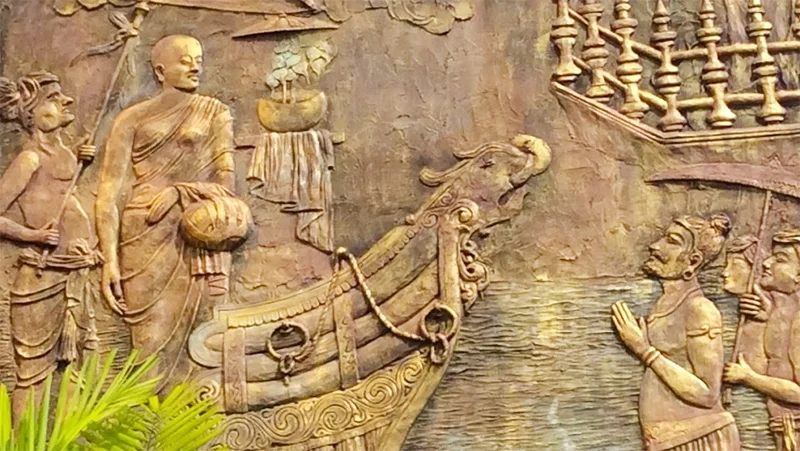
Unduvap Poya, which falls today, has great historical significance for Sri Lanka, as several important events occurred on that day but before looking into these, as the occasion demands, our first thought should be about impermanence. One of the cornerstones of Buddha’s teachings is impermanence and there is no better time to ponder over it than now, as the unfolding events of the unprecedented natural disaster exemplify it. Who would have imagined, even a few days ago, the scenes of total devastation we are witnessing now; vast swathes of the country under floodwaters due to torrential rain, multitudes of earth slips burying alive entire families with their hard-built properties and closing multiple trunk roads bringing the country to a virtual standstill. The best of human kindness is also amply demonstrated as many risk their own lives to help those in distress.
In the struggle of life, we are attached and accumulate many things, wanted and unwanted, including wealth overlooking the fact that all this could disappear in a flash, as happened to an unfortunate few during this calamitous time. Even the survivors, though they are happy that they survived, are left with anxiety, apprehension, and sorrow, all of which is due to attachment. We are attached to things because we fail to realise the importance of impermanence. If we do, we would be less attached and less affected. Realisation of the impermanent nature of everything is the first step towards ultimate detachment.
It was on a day like this that Arahant Bhikkhuni Sanghamitta arrived in Lanka Deepa bringing with her a sapling of the Sri Maha Bodhi tree under which Prince Siddhartha attained Enlightenment. She was sent by her father Emperor Ashoka, at the request of Arahant Mahinda who had arrived earlier and established Buddhism formally under the royal patronage of King Devanampiyatissa. With the very successful establishment of Bhikkhu Sasana, as there was a strong clamour for the establishment of Bhikkhuni Sasana as well, Arahant Mahinda requested his father to send his sister which was agreed to by Emperor Ashoka, though reluctantly as he would be losing two of his children. In fact, both served Lanka Deepa till their death, never returning to the country of their birth. Though Arahant Sanghamitta’s main mission was otherwise, her bringing a sapling of the Bo tree has left an indelible imprint in the annals of our history.
According to chronicles, King Devanampiyatissa planted the Bo sapling in Mahamevnawa Park in Anuradhapura in 288 BCE, which continues to thrive, making it the oldest living human planted tree in the world with a known planting date. It is a treasure that needs to be respected and protected at all costs. However, not so long ago it was nearly destroyed by the idiocy of worshippers who poured milk on the roots. Devotion clouding reality, they overlooked the fact that a tree needs water, not milk!
A monk developed a new practice of Bodhi Puja, which even today attracts droves of devotees and has become a ritual. This would have been the last thing the Buddha wanted! He expressed gratitude by gazing at the tree, which gave him shelter during the most crucial of times, for a week but did not want his followers to go around worshipping similar trees growing all over. Instead of following the path the Buddha laid for us, we seem keen on inventing new rituals to indulge in!
Arahant Sanghamitta achieved her prime objective by establishing the Bhikkhuni Sasana which thrived for nearly 1200 years till it fell into decline with the fall of the Anuradhapura kingdom. Unfortunately, during the Polonnaruwa period that followed the influence of Hinduism over Buddhism increased and some of the Buddhist values like equality of sexes and anti-casteism were lost. Subsequently, even the Bhikkhu Sasana went into decline. Higher ordination for Bhikkhus was re-established in 1753 CE with the visit of Upali Maha Thera from Siam which formed the basis of Siam Maha Nikaya. Upali Maha Thero is also credited with reorganising Kandy Esala Perahera to be the annual Procession of the Temple of Tooth, which was previously centred around the worship of deities, by getting a royal decree: “Henceforth Gods and men are to follow the Buddha”
In 1764 CE, Siyam Nikaya imposed a ‘Govigama and Radala’ exclusivity, disregarding a fundamental tenet of the Buddha, apparently in response to an order from the King! Fortunately, Buddhism was saved from the idiocy of Siyam Nikaya by the formation of Amarapura Nikaya in 1800 CE and Ramanna Nikaya in 1864 CE, higher ordination for both obtained from Burma. None of these Niakya’s showed any interest in the re-establishment of Bhikkhuni Sasana which was left to a band of interested and determined ladies.
My thoughts and admiration, on the day Bhikkhuni Sasana was originally established, go to these pioneers whose determination knew no bounds. They overcame enormous difficulties and obtained higher ordination from South Korea initially. Fortunately, Ven. Inamaluwe Sri Sumangala Thero, Maha Nayaka of Rangiri Dambulla Chapter of Siyam Maha Nikaya started offering higher ordination to Bhikkhunis in 1998 but state recognition became a sore point. When Venerable Welimada Dhammadinna Bhikkhuni was denied official recognition as a Bhikkhuni on her national identity card she filed action, with the support of Ven. Inamaluwe Sri Sumangala Thero. In a landmark majority judgement delivered on 16 June, the Supreme Court ruled that the fundamental rights of Ven. Dhammadinna were breached and also Bhikkhuni Sasana was re-established in Sri Lanka. As this judgement did not receive wide publicity, I wrote a piece titled “Buddhism, Bhikkhus and Bhikkhunis” (The Island, 10 July 2025) and my wish for this Unduvap Poya is what I stated therein:
“The landmark legal battle won by Bhikkhunis is a victory for common sense more than anything else. I hope it will help Bhikkhuni Sasana flourish in Sri Lanka. The number of devotees inviting Bhikkhunis to religious functions is increasing. May Bhikkhunis receive the recognition they richly deserve.” May there be a rapid return to normalcy from the current tragic situation.”
by Dr Upul Wijayawardhana
Opinion
Royal Over Eighties
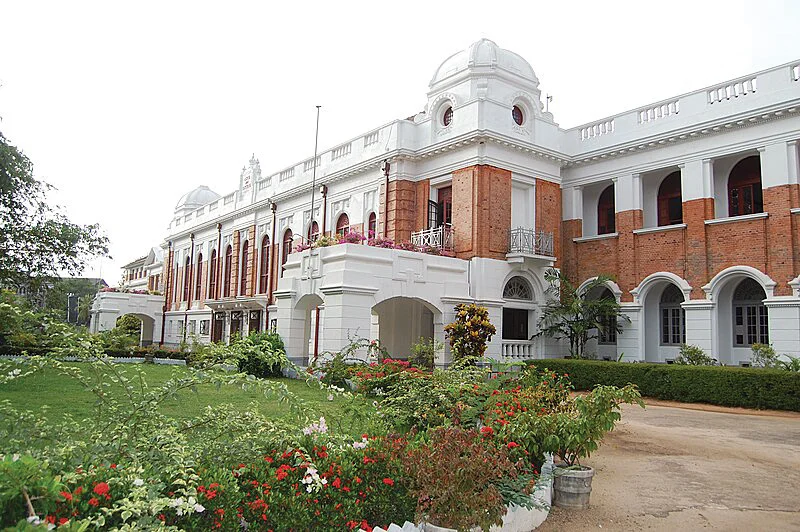
The gathering was actually of ‘Over Seventies’ but those of my generation present were mostly of the late eighties.
Even of them I shall mention only those whom I know at least by name. But, first, to those few of my years and older with whom speech was possible.
First among them, in more sense than one, was Nihal Seneviratne, at ninety-one probably the oldest present. There is no truth to the story that his state of crisp well-being is attributable to the consumption of gul-bunis in his school days. It is traceable rather to a life well lived. His practice of regular walks around the house and along the lane on which he lives may have contributed to his erect posture. As also to the total absence of a walking stick, a helper, or any other form of assistance as he walked into the Janaki hotel where this gathering took place.
Referencing the published accounts of his several decades-long service in Parliament as head of its administration, it would be moot to recall that his close friend and fellow lawyer, J E D Gooneratne, teased him in the following terms: “You will be a bloody clerk all your life”. He did join service as Second Assistant to the Clerk to the House and moved up, but the Clerk became the Secretary General. Regardless of such matters of nomenclature, it could be said that Nihal Seneviratne ran the show.
Others present included Dr. Ranjith de Silva, Surgeon, who was our cricket Captain and, to the best of my knowledge, has the distinction of never engaging in private practice.
The range of Dr. K L (Lochana) Gunaratne’s interests and his accomplishments within each are indeed remarkable. I would think that somebody who’d received his initial training at the AA School of Architecture in London would continue to have architecture as the foundation of his likes /dislikes. Such would also provide a road map to other pursuits whether immediately related to that field or not. That is evident in the leadership roles he has played in the National Academy of Sciences and the Institute of Town Planners among others. As I recall he has also addressed issues related to the Panadura Vadaya.
My memories of D L Seneviratne at school were associated with tennis. As happens, D L had launched his gift for writing over three decades ago with a history of tennis in Sri Lanka (1991). That is a game with which my acquaintance is limited to sending a couple of serves past his ear (not ‘tossing the ball across’ as he asked me to) while Jothilingam, long much missed, waited for his team mates to come for practices. It is a game at which my father spent much time both at the Railway sports club and at our home-town club. (By some kind of chance, I recovered just a week ago the ‘Fred de Saram Challenge Cup’ which, on his winning the Singles for the third time, Koo de Saram came over to the Kandana Club to hand over to him for keeps. They played an exhibition match which father won). D L would know whether or not, as I have heard, in an exhibition match in Colombo, Koo defeated Frank Sedgman, who was on his triumphant return home to Oz after he had won the Wimbledon tournament in London.
I had no idea that D L has written any books till my son brought home the one on the early history of Royal under Marsh and Boake, (both long-bearded young men in their twenties).
It includes a rich assortment of photographs of great value to those who are interested in the history of the Anglican segment of Christian missionary activity here in the context of its contribution to secondary school education. Among them is one of the school as it appeared on moving to Thurstan road from Mutwal. It has been extracted from the History of Royal, 1931, done by students (among whom a relative, Palitha Weeraman, had played a significant role).
As D L shows, (in contra-distinction to the Catholic schools) the CMS had engaged in a largely secular practice. Royal remained so through our time – when one could walk into the examination room and answer questions framed to test one’s knowledge of Christianity, Buddhism, Hinduism and Islam; a knowledge derived mostly from the lectures delivered by an Old Boy at general assembly on Friday plus readings from the Dhammapada, the Bhagavad Gita, the St. John’s version of the Bible or the Koran recited by a student at senior assembly on Tuesday / Thursday.
D L’s history of Royal College had followed in 2006.
His writing is so rich in detail, so precise in formulation, that I would consider this brief note a simple prompt towards a publisher bringing out new editions at different levels of cost.
It was also a pleasure to meet Senaka Amarasinghe, as yet flaunting his Emperor profile, and among the principal organisers of this event.
The encounter with I S de Silva, distinguished attorney, who was on Galle road close to Janaki lane, where I lived then was indeed welcome. As was that with Upali Mendis, who carried out cataract surgery on my mother oh so long ago when he was head of the Eye Hospital. His older brother, L P, was probably the most gifted student in chemistry in our time.
Most serendipitous perhaps was meeting a son of one of our most popular teachers from the 1950s, – Connor Rajaratnam. His cons were a caution.
by Gamini Seneviratne
Opinion
“Regulatory Impact Assessment – Not a bureaucratic formality but essentially an advocacy tool for smarter governance”: A response
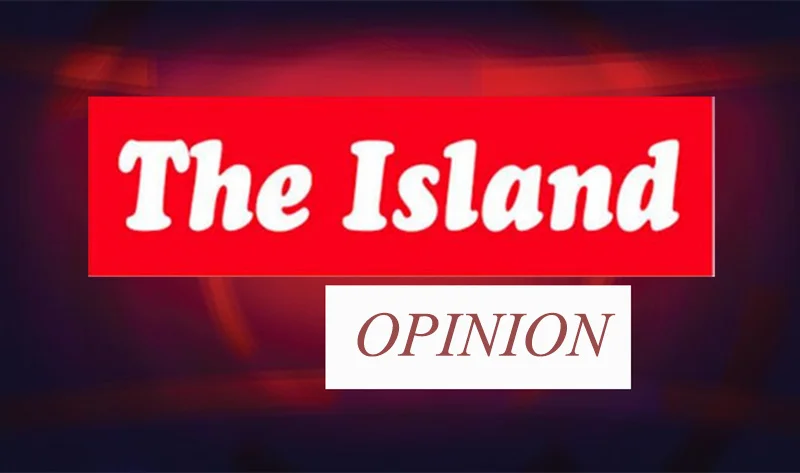
Having meticulously read and re-read the above article published in the opinion page of The Island on the 27 Nov, I hasten to make a critical review on the far-reaching proposal made by the co-authors, namely Professor Theekshana Suraweera, Chairman of the Sri Lanka Standards Institution and Dr. Prabath.C.Abeysiriwardana, Director of Ministry of Science and Technology
The aforesaid article provides a timely and compelling critique of Sri Lanka’s long-standing gaps in evidence-based policymaking and argues persuasively for the institutional adoption of Regulatory Impact Assessment (RIA). In a context where policy missteps have led to severe economic and social consequences, the article functions as an essential wake-up call—highlighting RIA not as a bureaucratic formality but as a foundational tool for smarter governance.
One of the article’s strongest contributions is its clear explanation of how regulatory processes currently function in Sri Lanka: legislation is drafted with narrow legal scrutiny focused mainly on constitutional compliance, with little or no structured assessment of economic, social, cultural, or environmental impacts. The author strengthens this argument with well-chosen examples—the sudden ban on chemical fertilizer imports and the consequences of the 1956 Official Language Act—demonstrating how untested regulation can have far-reaching negative outcomes. These cases effectively illustrate the dangers of ad hoc policymaking and underscore the need for a formal review mechanism.
The article also succeeds in demystifying RIA by outlining its core steps—problem definition, option analysis, impact assessment, stakeholder consultation, and post-implementation review. This breakdown makes it clear that RIA is not merely a Western ideal but a practical, structured, and replicable process that could greatly improve policymaking in Sri Lanka. The references to international best practices (such as the role of OIRA in the United States) lend credibility and global context, showing that RIA is not experimental but an established standard in advanced governance systems.
However, the article could have further strengthened its critique by addressing the political economy of reform: the structural incentives, institutional resistance, and political culture that have historically obstructed such tools in Sri Lanka. While the challenges of data availability, quantification, and political pressure are briefly mentioned, a deeper analysis of why evidence-based policymaking has not taken root—and how to overcome these systemic barriers—would have offered greater practical value.
Another potential enhancement would be the inclusion of local micro-level examples where smaller-scale regulations backfired due to insufficient appraisal. This would help illustrate that the problem is not limited to headline-making policy failures but affects governance at every level.
Despite these minor limitations, the article is highly effective as an advocacy piece. It makes a strong case that RIA could transform Sri Lanka’s regulatory landscape by institutionalizing foresight, transparency, and accountability. Its emphasis on aligning RIA with ongoing national initiatives—particularly the strengthening of the National Quality Infrastructure—demonstrates both pragmatism and strategic vision.
At a time, when Chairmen of statutory bodies appointed by the NPP government play a passive voice, the candid opinion expressed by the CEO of SLSI on the necessity of a Regulatory Impact Assessment is an important and insightful contribution. It highlights a critical missing link in Sri Lanka’s policy environment and provides a clear call to action. If widely circulated and taken seriously by policymakers, academics, and civil society, it could indeed become the eye-opener needed to push Sri Lanka toward more rational, responsible, and future-ready governance.
J. A. A. S. Ranasinghe,
Productivity Specialty and Management Consultant
(rathula49@gmail.com)
-

 News5 days ago
News5 days agoWeather disasters: Sri Lanka flooded by policy blunders, weak enforcement and environmental crime – Climate Expert
-
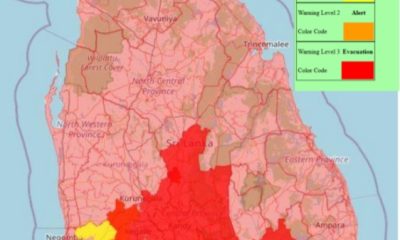
 Latest News6 days ago
Latest News6 days agoLevel I landslide RED warnings issued to the districts of Badulla, Colombo, Gampaha, Kalutara, Kandy, Kegalle, Kurnegala, Natale, Monaragala, Nuwara Eliya and Ratnapura
-
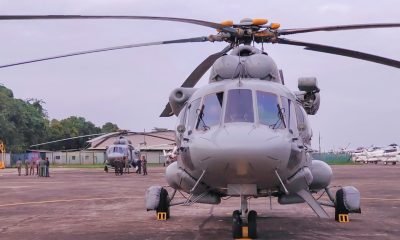
 Latest News6 days ago
Latest News6 days agoINS VIKRANT deploys helicopters for disaster relief operations
-
News2 days ago
Lunuwila tragedy not caused by those videoing Bell 212: SLAF
-
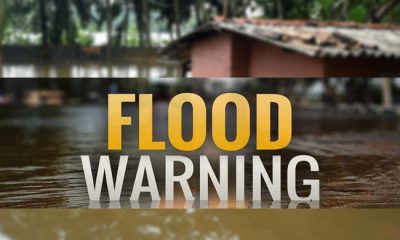
 Latest News6 days ago
Latest News6 days agoDepartment of Irrigation issues Critical flood warning to the Kelani river basin
-

 Latest News4 days ago
Latest News4 days agoLevel III landslide early warnings issued to the districts of Badulla, Kandy, Kegalle, Kurunegala, Matale and Nuwara-Eliya
-

 News6 days ago
News6 days agoCountry reels under worst weather in living memory
-

 Editorial6 days ago
Editorial6 days agoNeeded: Action not rhetoric













